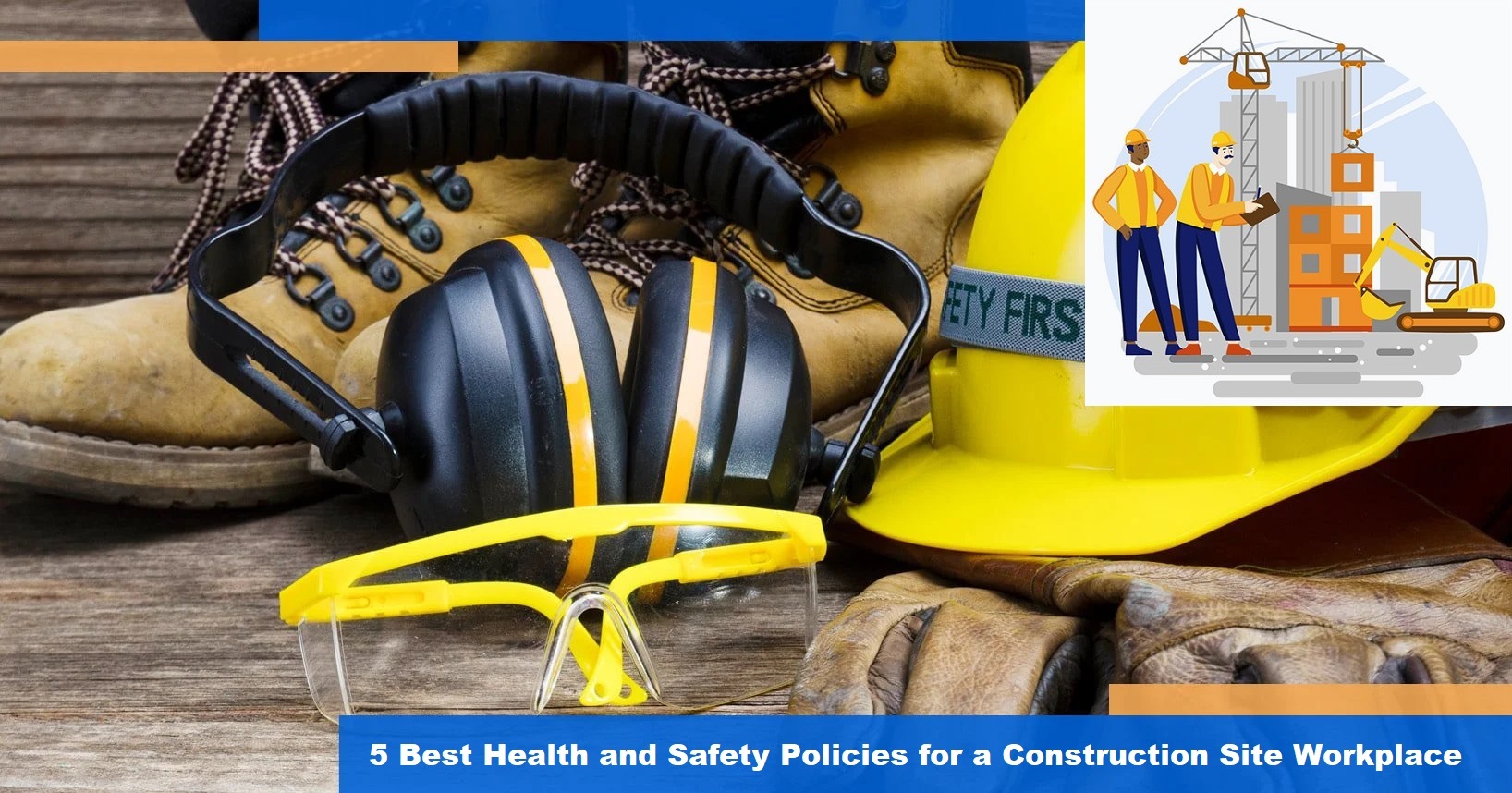
Ensure a healthy and safe work environment, which is of paramount importance at a construction site. The construction industry can pose various threats to the people present at the site, whether workers or visitors. Construction sites are known as a dangerous place due to various hazards and risks, so implementing effective health and safety policies is crucial. By prioritizing the well-being of workers, employers not only protect their employees but also enhance productivity and minimize costly accidents. In this blog post, we will guide you on the five best health and safety policies for a construction site workplace, providing valuable insights on maintaining a safe and secure environment.
First Policy – Personal Protective Equipment (PPE)
Personal protective equipment, also known as PPE, is an indispensable aspect of construction site safety. It includes protective gear such as helmets, goggles, gloves, safety boots, and high-visibility clothing. PPE serves as a barrier between workers and potential hazards, significantly reducing the risk of injuries and accidents.
Certain health and safety regulations make employers legally responsible for providing their employees with the essential PPE to ensure their well-being. To ensure the effective use of PPE, employers must provide appropriate equipment tailored to the specific tasks and potential hazards on the construction site.
However, the provision of PPE comes with certain responsibilities and costs. These responsibilities and costs include the cost of maintenance and the information required to utilize the personal protective equipment properly. Some workers may need to be properly aware of how to wear and use some PPE and similarly maintain it. In other cases, a worker may be unable to properly identify any faults or wear and tear in their PPE if they lack sufficient knowledge. Therefore, it is required for them to take on appropriate training, such as PPE training, to learn how they can maintain their equipment, properly utilize it, and identify any possible faults with the provided PPE.
Second Policy – Hazard Communication
Communication is crucial when it comes to identifying and managing hazards on construction sites. A comprehensive hazard communication policy ensures that workers are aware of potential risks associated with their tasks and are equipped with the necessary information to handle hazardous materials safely.
This policy’s cornerstone is using Safety Data Sheets (SDS) and proper labelling of hazardous substances. Employers should maintain an up-to-date inventory of all hazardous materials on site, accompanied by their corresponding SDS. Clear and visible labels must be affixed to containers, providing essential information about the materials.
Employers should conduct proper training programs to educate workers on interpreting SDS, recognizing hazardous substances, and employing appropriate precautions. By fostering effective hazard communication, construction sites can minimize the potential for accidents and the harmful effects of exposure to hazardous materials.
Third Policy – Fall Protection
At construction sites, falls are one of the most standard causes of injuries and fatalities. Implementing a robust fall protection policy is crucial for ensuring workers’ safety at heights.
A comprehensive approach to fall protection includes the installation of guardrails, safety nets, and personal fall arrest systems (PFAS). Guardrails should be erected around open edges and platforms, while safety nets provide additional protection. PFAS, such as harnesses and lanyards, should be utilized when working at heights with the risk of falling.
Regular inspections and maintenance of safety equipment such as fall protection tools are vital for ensuring its integrity and reliability. Furthermore, workers should undergo thorough training on fall prevention techniques, recognize potential hazards, and correctly use fall protection equipment. All construction site workers need to be aware of the hazards they are exposed to while working at a height in construction, as in such heights, the chance of the workers falling and sustaining an injury is at maximum.
Fourth Policy – Electrical Safety
Electrical hazards pose significant risks on construction sites. The employer or responsible persons must establish an effective electrical safety policy to mitigate these dangers, emphasizing prevention and training.
Workers involved in electrical tasks should possess the necessary qualifications and training. Employers must prioritize regular electrical safety training programs to ensure workers are familiar with the hazards associated with electricity, identify potential risks and work safely around electrical systems and equipment.
Furthermore, proper use and maintenance of tools, equipment, and electrical systems are essential. Implementing lockout/tagout procedures for electrical work provides an additional layer of safety by isolating electrical sources before maintenance or repairs are conducted.
Fifth Policy – Emergency Response and Evacuation
Emergencies can occur unexpectedly on construction sites, making having a well-defined emergency response and evacuation policy crucial. By establishing clear procedures and training workers accordingly, employers can effectively manage emergencies and minimize potential injuries or fatalities.
An emergency response plan should outline the roles and responsibilities of employees during different emergency scenarios. Adequate communication methods, such as alarms and visual signals, should be implemented to ensure workers are promptly notified of emergencies.
Employers should provide regular training and drills to familiarize workers with emergency procedures and test the effectiveness of the response plan. By prioritizing emergency preparedness, construction sites can respond swiftly and efficiently during critical situations, potentially saving lives.
Conclusion
Implementing the best health and safety policies is paramount for creating a secure work environment on construction sites. The five policies discussed in this blog post – Personal Protective Equipment (PPE), Hazard Communication, Fall Protection, Electrical Safety, and Emergency Response and Evacuation – form the foundation of a comprehensive safety program.
Employers can ensure a safe and productive work environment by prioritizing the well-being of workers through the proper provision and usage of PPE, effective communication of hazards, prevention of falls, electrical safety measures, and thorough emergency planning on construction sites.
Remember, a strong commitment to health and safety not only safeguard employees but also improves productivity, reduces costs associated with accidents, and fosters a positive workplace culture. So, let us join hands in prioritizing health and safety in construction sites for a better, safer future.
